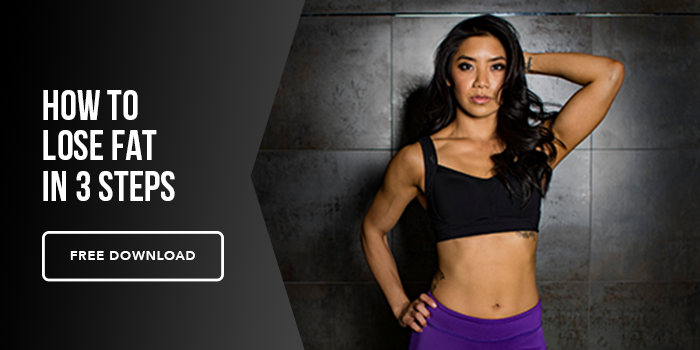For some reason, the internet still loves the “dirty bulk” — that glorious phase where you eat like a raccoon in a dumpster, call it “gains season,” and justify every donut as “fuel.”
It works, sure. You’ll gain muscle. But you’ll also gain fat and get scolded by your family doctor. Then you’ll spend six months hating your life dieting it back off.
There’s a better way: the lean bulk.
Why More Calories Don’t Mean More Muscle
Let’s get this out of the way — muscle growth is a slow process. Even with flawless training, great sleep, and elite-level discipline, you’re not packing on 20 pounds of pure muscle in a month.
Your body can only synthesize new muscle tissue so fast. Once you’ve given it enough calories and protein to do that, extra food mostly turns into fat.
So, while it’s true you need to eat more to gain muscle, there’s a sweet spot. Overshoot it, and you’re just adding fluff. And that extra fluff isn’t harmless. The more time spent overweight, the harder it is to lose it later. In some cases, you might even accumulate more fat cells. Not good.
How Big Should Your Surplus Be?
Most people do best with a daily surplus of about 200–300 calories above maintenance.
- If you’re newer to lifting, you can push it a little higher — maybe 300–500.
- If you’ve been training properly for years, you’ll likely see better results staying closer to 200–300, because advanced lifters build muscle much slower.
This approach is called a lean bulk (or a controlled surplus, if you hate that word). It’s boring. It’s not dramatic. But it works — and it saves you from that awkward “I look like a potato” phase mid-bulk.
How to Find Your Maintenance Calories
If you don’t know your maintenance calories, here’s the simplest way to find them:
-
Track what you eat for two weeks.
-
Weigh yourself every morning, under the same conditions.
-
If your weight stays about the same, congrats — that’s your maintenance.
-
Add 200–300 calories per day to that number. Done.
Online calculators can get you close, but nothing beats data from your actual life.
Protein Still Matters
Some people hear “bulking” and instantly drop their protein intake because “I’m eating so many calories now, it doesn’t matter.” Wrong.
You still want about 1 gram of protein per pound of target bodyweight daily. Why? Because protein supplies the amino acids your body needs to repair and grow muscle tissue after training.
Training Has to Match Your Calories
A lean bulk only works if you’re lifting like you mean it.
That means:
- Prioritize compound lifts.
- Train each muscle group at least twice a week.
- Progressively overload (lift heavier or do more reps over time).
- Sleep enough to recover.
If you bump up calories but slack off in the gym — you’re now just the average, overweight American.
What About Cardio?
Cardio isn’t forbidden during a lean bulk. In fact, keeping in a few sessions of low-to-moderate cardio can help with appetite control, keep your heart healthy, and support recovery.
Just don’t let it interfere with your lifting. If you’re doing so much cardio that you’re tired for your lifts, dial it back.
How to Tell If You’re Gaining Too Much Fat
This is where people freak out: “How do I know if I’m gaining muscle or just getting soft?”
A good rule of thumb is to watch the scale and the mirror:
✅ If you’re gaining about 0.5–1 pound per week, you’re in a solid range.
✅ If your lifts are going up and your physique still looks reasonably tight, you’re good.
❌ If your weight jumps 5 pounds in a week and you can’t see your belt anymore — slow down. Drop calories a bit.
You can also track waist circumference. If your waist measurement skyrockets while your arms and shoulders don’t budge, that’s extra body fat, not muscle.
What About Mini-Cuts?
If you overshoot your surplus or just feel fluffier than you’d like, a short “mini-cut” can help.
A mini-cut is a brief, aggressive diet — think 2–6 weeks — to trim off a few pounds of fat without tanking your strength. Then you return to a lean surplus.
They’re optional, but useful for keeping a long bulk phase under control. They also are a great tool for regaining your appetite.
Patience: The Least Sexy Secret
Nobody wants to hear this, but the lean bulk requires patience. You won’t blow up overnight. You’ll gain slowly, stay leaner, and spend less time dieting later.
It’s delayed gratification — which, funny enough, is also how you build muscle in the first place.
The Bottom Line
Building muscle without getting fat isn’t about magic supplements or doing abs every day. It’s about eating enough — not too much. Training hard enough to give your body a reason to grow. And giving it time to do its thing.
So, skip the all-you-can-eat buffet phase. Track your intake. Lift hard. Sleep a lot.
Then, in six months, give yourself a pat on the back – and while you’re there, feel up those trap gains.






